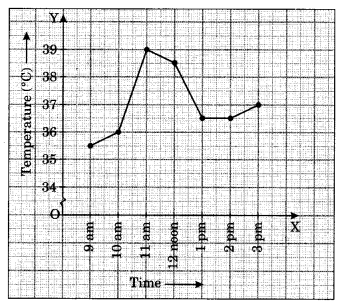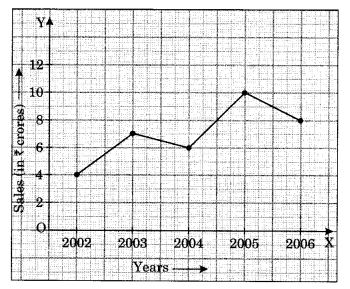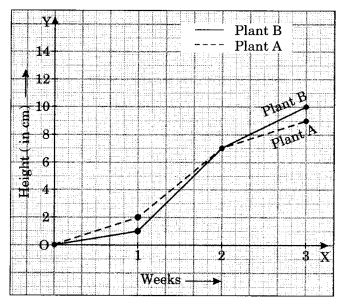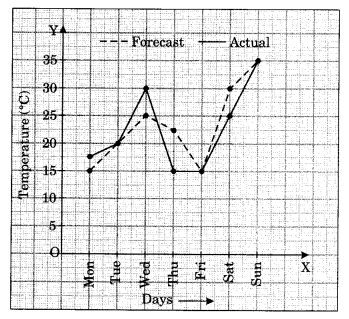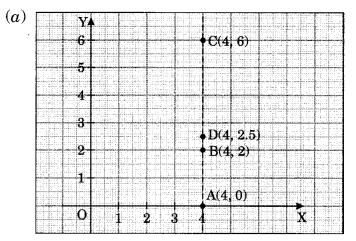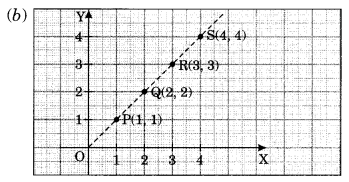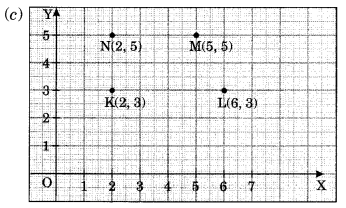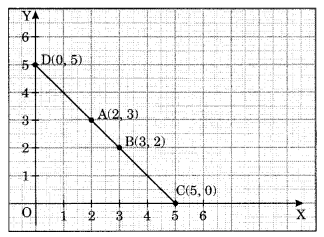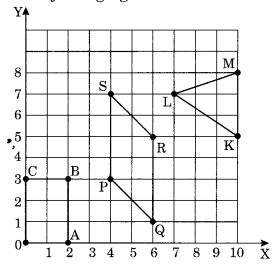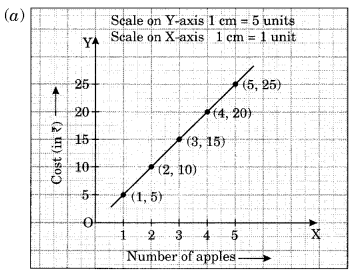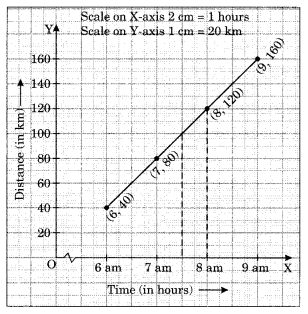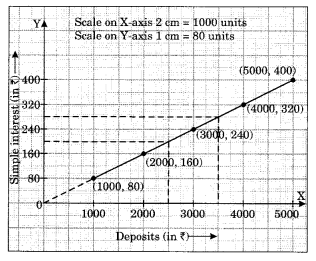Solution:
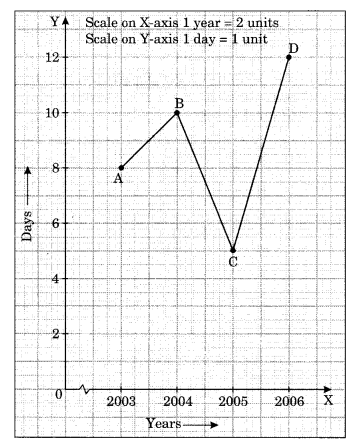
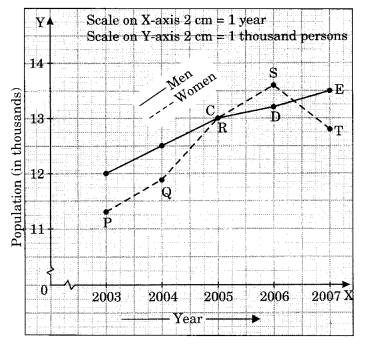
Question 6.
A courier-person cycle from a town to a neighbouring suburban area to deliver a parcel to the merchant. His distance from the town at different times is shown by the following graph.
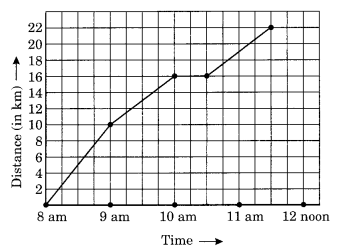
(a) What is the scale taken for the time axis?
(b) How much time did the person take for travel?
(c) How far is the place of the merchant from the town?
(d) Did the person stop on his way? Explain?
(e) During which period did he ride fastest?
Solution:
(a) Scale taken on time-axis i.e., the x-axis is 4 units = 1 hour
(b) Total time taken by the person for the total journey is 3 hours 30 minutes.
(c) The place of the merchant is at a distant of 22 km from the town.
(d) Yes, this is indicated by the horizontal part of the graph clearly the person stopped from 10 am to 10:30 am.
(e) He rode fastest between 8 am and 9 am.
Question 7.
Can there be a time-temperature graph as follows? Justify your answer.

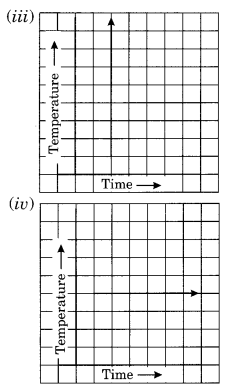
Solution:
(i) It represents a time-temperature graph where temperature increases as the time increase.
(ii) It shows a time-temperature graph where temperature decreases as the time increases.
(iii) It does not represent a time-temperature graph. Here the temperature is increasing at a constant time which is not possible.
(iv) It represents a time-temperature graph where the temperature remains constant when the time is increasing.

